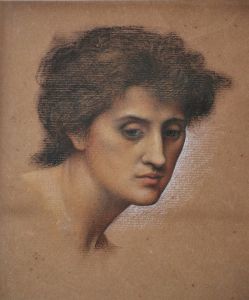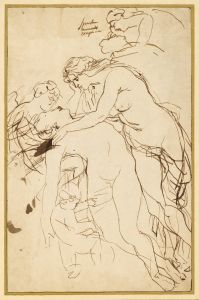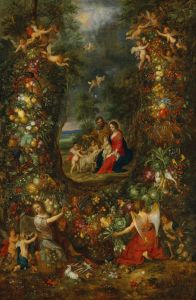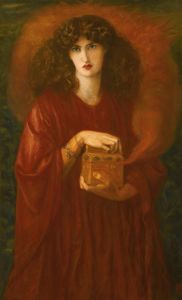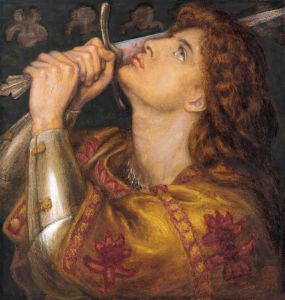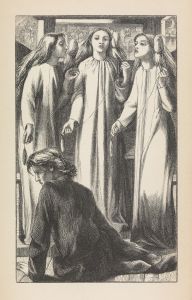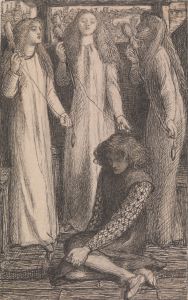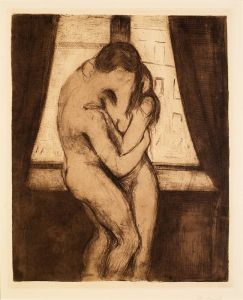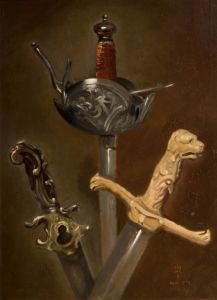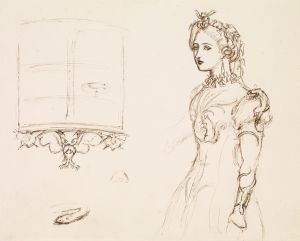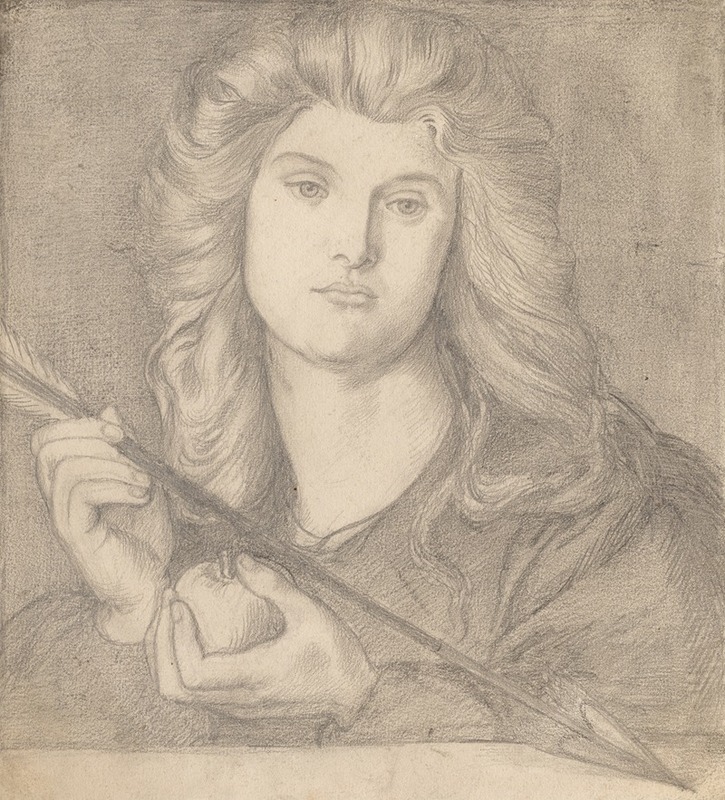
Study for “Venus Verticordia”
A hand-painted replica of Dante Gabriel Rossetti’s masterpiece Study for “Venus Verticordia”, meticulously crafted by professional artists to capture the true essence of the original. Each piece is created with museum-quality canvas and rare mineral pigments, carefully painted by experienced artists with delicate brushstrokes and rich, layered colors to perfectly recreate the texture of the original artwork. Unlike machine-printed reproductions, this hand-painted version brings the painting to life, infused with the artist’s emotions and skill in every stroke. Whether for personal collection or home decoration, it instantly elevates the artistic atmosphere of any space.
"Study for 'Venus Verticordia'" is a preparatory work by the British artist Dante Gabriel Rossetti, created in 1867. Rossetti was a founding member of the Pre-Raphaelite Brotherhood, a group of English painters, poets, and critics who aimed to reform art by rejecting what they considered the mechanistic approach first adopted by Mannerist artists who succeeded Raphael and Michelangelo. The Pre-Raphaelites sought a return to the abundant detail, intense colors, and complex compositions of Quattrocento Italian art.
The study is a preliminary drawing for Rossetti's larger and more famous oil painting "Venus Verticordia," which depicts Venus, the Roman goddess of love, beauty, and fertility. The title "Venus Verticordia" translates to "Venus the Changer of Hearts," a reference to the goddess's power to transform and influence human emotions and desires.
In the study, Rossetti focuses on the figure of Venus, capturing her sensuality and divine beauty. The drawing is characterized by its delicate lines and attention to detail, particularly in the rendering of Venus's face and hair. Rossetti's use of soft shading and careful line work exemplifies his skill as a draughtsman and his commitment to the Pre-Raphaelite principles of naturalism and precision.
The final painting "Venus Verticordia" features Venus holding an apple, a symbol of temptation and desire, while surrounded by a lush array of flowers. The apple is a direct reference to the mythological story of the Judgment of Paris, where Paris awards the apple to Venus, deeming her the fairest of all the goddesses. The flowers in the painting are not merely decorative; they carry symbolic meanings related to love, beauty, and transience, themes central to Rossetti's work.
Rossetti's model for Venus was Alexa Wilding, one of his favorite muses. Wilding's striking features and ethereal beauty made her an ideal subject for Rossetti's exploration of mythological and romantic themes. Her collaboration with Rossetti resulted in some of the most iconic images of the Pre-Raphaelite movement.
"Study for 'Venus Verticordia'" is an important piece within Rossetti's oeuvre as it provides insight into his artistic process and the development of one of his significant works. The study demonstrates Rossetti's meticulous approach to composition and his dedication to capturing the essence of his subjects. It also reflects the broader Pre-Raphaelite interest in classical mythology and the symbolic use of nature.
The study is held in various collections, including private collections and public institutions, where it is appreciated for its artistic and historical significance. It continues to be a subject of interest for art historians and enthusiasts who study Rossetti's contributions to the Pre-Raphaelite movement and his influence on subsequent generations of artists.
In summary, "Study for 'Venus Verticordia'" by Dante Gabriel Rossetti is a preparatory drawing that exemplifies the artist's skill and his commitment to the ideals of the Pre-Raphaelite Brotherhood. It serves as a crucial link in understanding the creation of the final painting and Rossetti's broader artistic vision.






